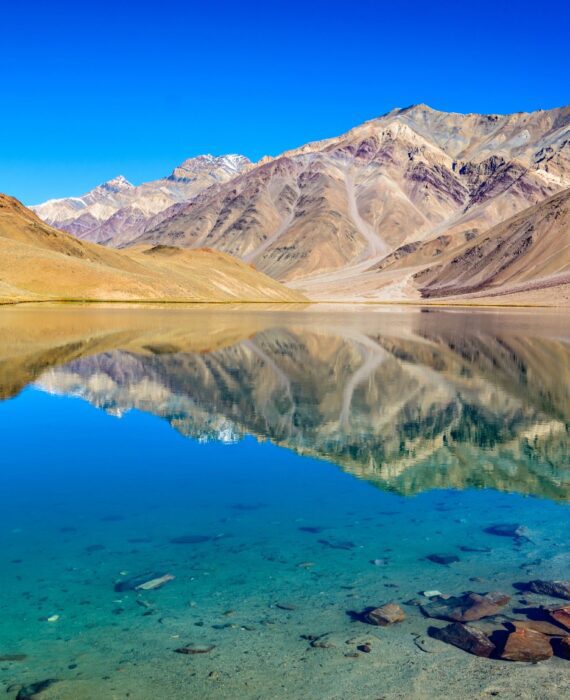
Chandratal Lake: Guide to the magnificient lake of Spiti Valley
Chandratal Lake – the most awaited part
Would you like to welcome New Year in the middle of the mountains, close-to-nature, while being on a great adventure and in a group of wonderful women?
Starts: from Delhi
Ends: In Delhi
Start: 8 PM, Dec 29, 2021
End: 6:30 AM, Jan 3, 2022
₹ 18700
What are your thoughts on getting lost in the white beauty of Solang valley while making a snowman? If you are looking for an adventure in the Himalayas, and an escape from reality, then this trip is for you.
Note: We have the same trip available, for the same dates, for a mixed-gender group as well.
Manali is a must-visit destination on the bucket list of any wanderlust or party-lover. To many, this place is the ultimate destination for a trip with your friends or the perfect romantic getaway. A favorite shooting destination, Manali has a special place in Bollywood Pop-culture. Be it the “Yeh Ishq Hai” scenes from Jab We Met or the scene near the Hadimba temple where Bunny says his famous “dal-chawal” dialogue in Yeh Jawani Hai Deewani. Most of what we think Manali is has been taken from these movies. Yes, picturesque destinations and wonderful people might appropriately sum up Manali. Yet, this heavenly place is so much more, with a rich culture and history.
Do you know where the name ‘Manali’ comes from?
Manali is named after the great sage Manu, who is believed to be the progenitor of humans in Hindu mythology. After the great flood, the place Manu first stepped in was apparently Manali. Hence, you will even find a temple in his name in Manali.
Located in the Kullu district of Himachal Pradesh, Manali is a beautiful hill station situated at an altitude of 2050 meters above sea level. Flanked by snow-capped mountains on all sides, Manali is spread along the banks of the river Beas. It is a lively place where the residents enjoy a slow-paced life in a fast-paced setting. It is always filled with visitors from all over the world. The roads and surroundings are lined with rows and rows of tall trees like firs, deodars, and chir pines among others, each older than the other. Just like these trees, the heritage and history of this place are extremely old with scores of legends surrounding Manali. It is an important place in Hindu mythology and was home to various Gods, Goddesses, and Sages. This scared knowledge combined with its reason-defying beauty is reasons enough for Manali to be known as the Valley of Gods!
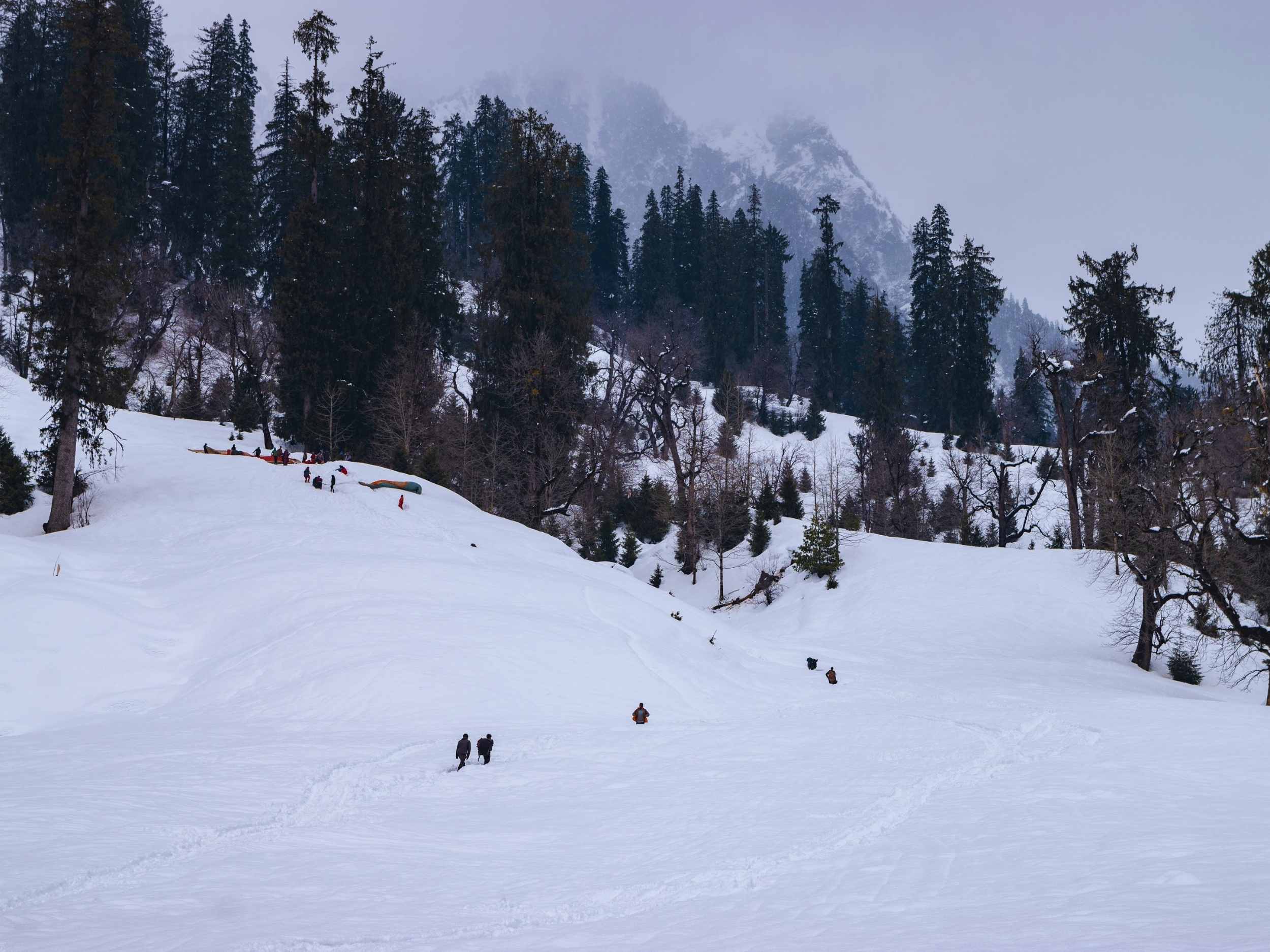
Known as the ‘Ski Paradise’, Solang is a popular spot famous for hosting winter adventure sports like skiing, parachuting, paragliding, trekking, and mountaineering. Located at an average altitude of 2,560 meters above sea level, it is one of the most favored trekking hotspots in Manali. The Mountaineering Institute of Manali has installed a ski lift in the valley for training purposes, which can also be used by tourists. There is also a small hut and a guest house, belonging to the Mountaineering and Allied Sports Institute. Offering breathtaking views of snow-capped mountains and glaciers, another name for this beautiful valley is ‘Solang Nala’. This name is a combination of the words ‘Solang’ meaning ‘nearby village’ and ‘Nullah’ meaning ‘water stream’. An apt name for this valley whose beauty flows as smoothly as a river.
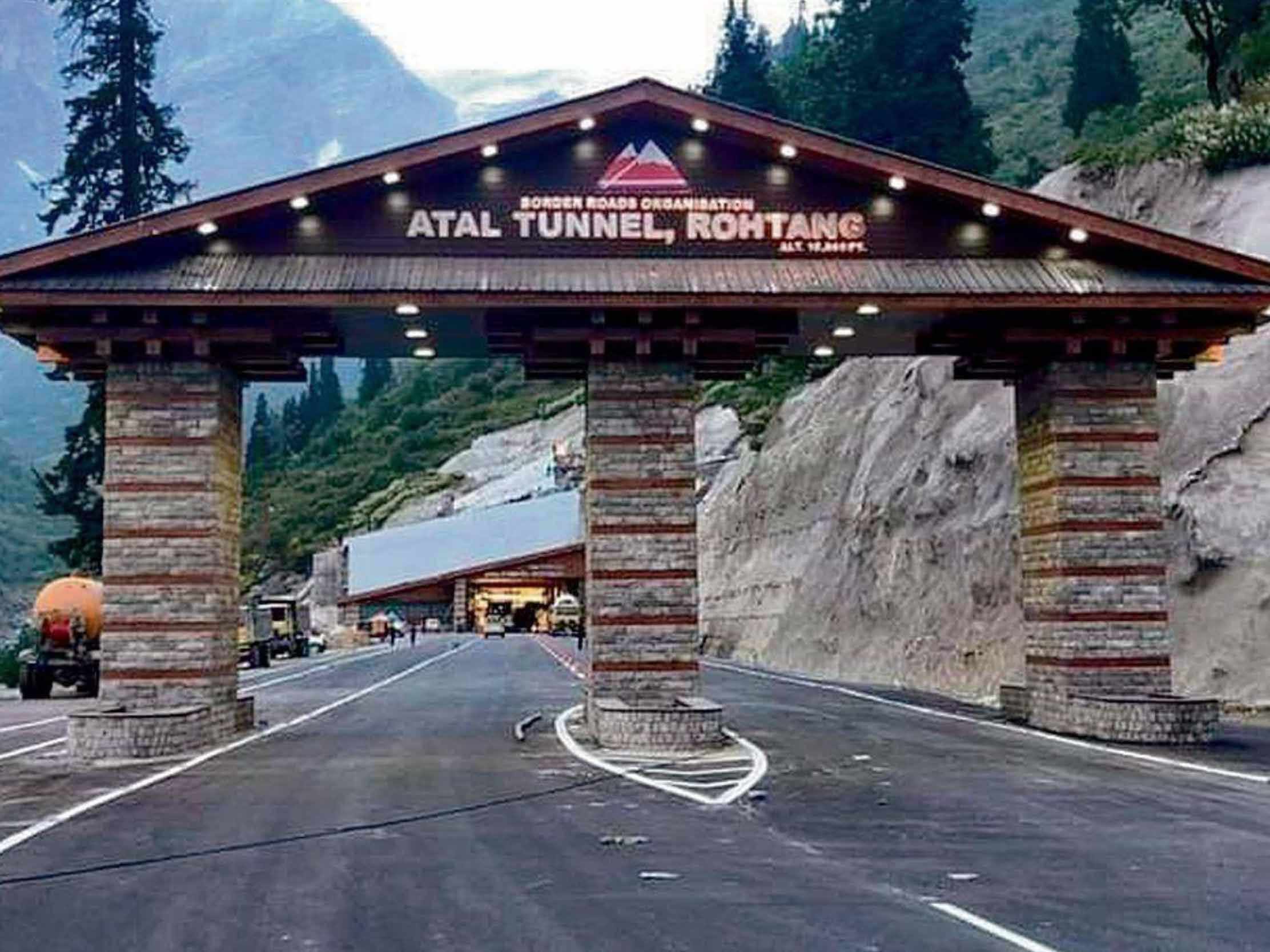
October 3rd, 2020 was a historic moment for India and one that was especially needed given the ongoing Pandemic. On this day the world’s longest highway tunnel was inaugurated, which connects Manali to the Lahaul-Spiti valley. This 9.02 km-long tunnel, built by the Border Roads Organisation (BRO) provides all-weather connectivity to the landlocked valley of Lahaul-Spiti. This valley would previously remain cut-off from the mainland for nearly six months each year due to the snow-bound Rohtang Pass. The distance between Manali and Leh has decreased drastically with this tunnel and the travel time has been reduced to about 4-5 hours. The tunnel is a horseshoe-shaped, single tube double lane tunnel with a roadway of 8 meters and an overhead clearance of 5.525 meters.
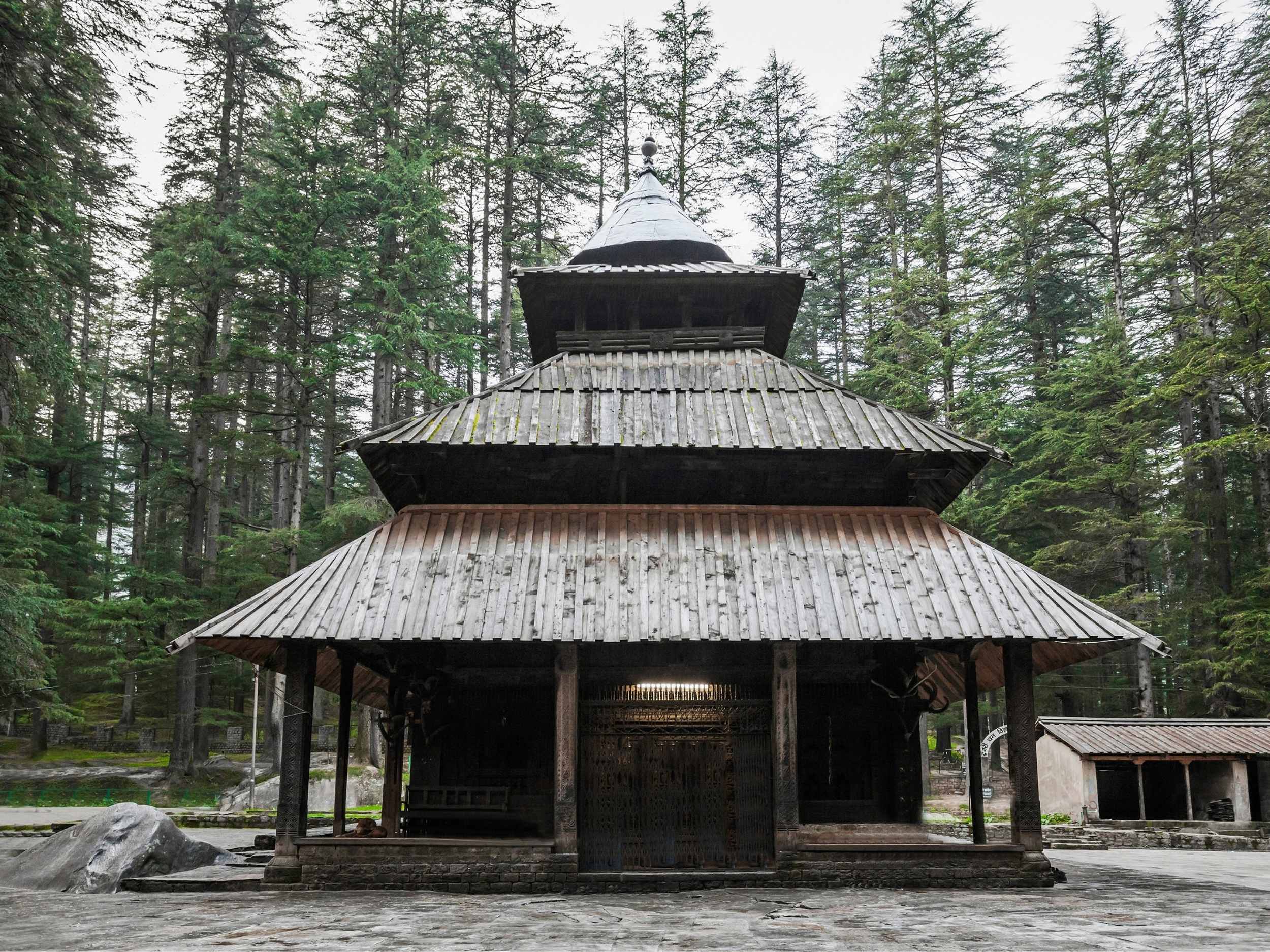
An important and often forgotten female figure from the Mahabharata was the wife of Bhima and mother of Ghatotkacha – Hidimba. The Hidimba Devi Temple is perhaps one of the only temples in all of India which honors this brave woman as the Goddess she truly was. Also known as the Dhungri Temple, it was commissioned in 1553 CE by Maharaja Bahadur Singh around a cave where Devi Hidimba was believed to have performed meditation. Located in close proximity to the town center on Mall Road, this temple has a strong stone foundation. The Shikhar (tower) of the temple reaches as high as the deodar trees surrounding the four-tiered, pagoda-style wood and stone structure. During Navaratri, when the rest of the Hindus across the nation worship the Goddess Durga, the people in Manali offer thei
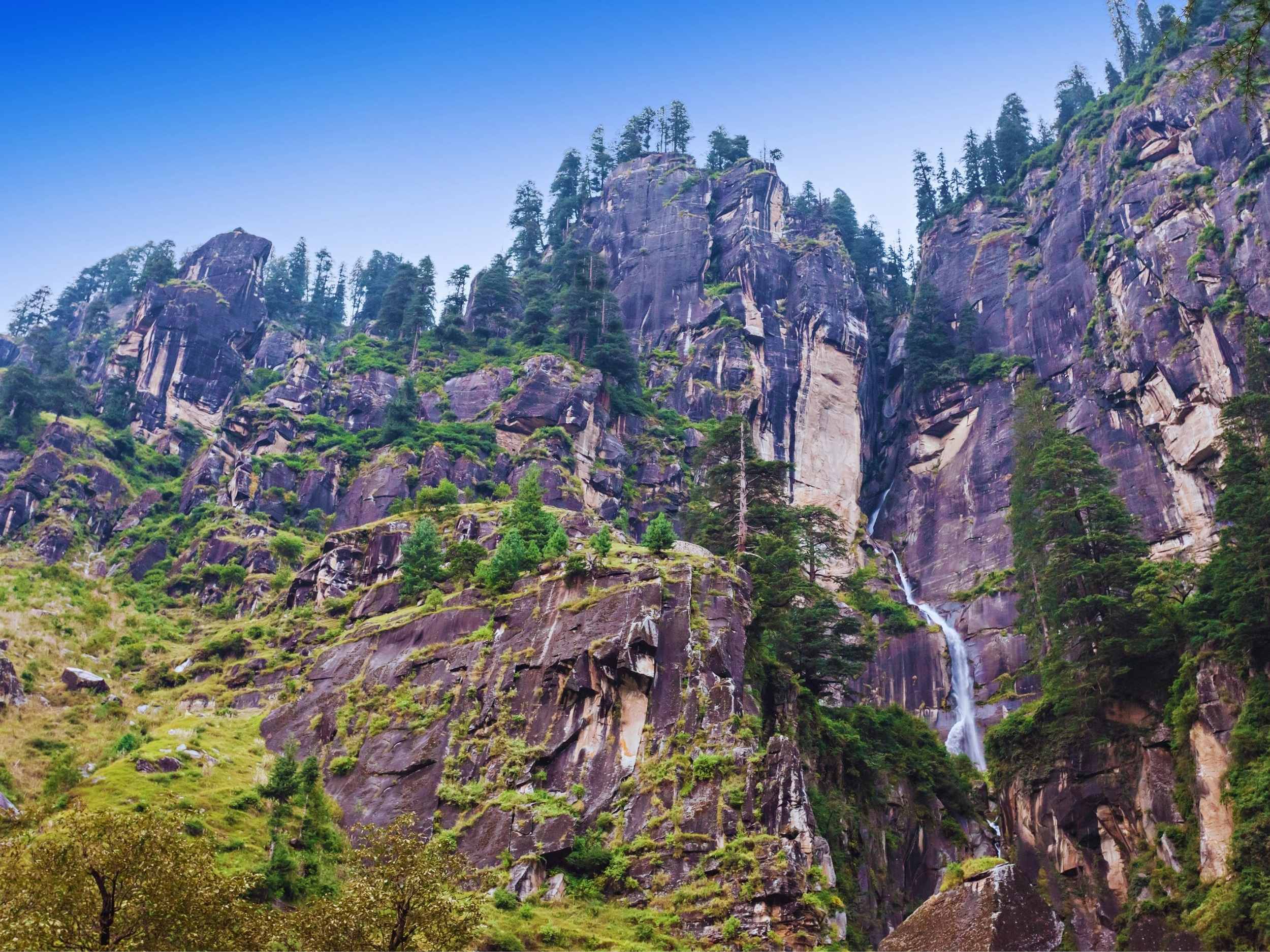
Once at the outskirts of the Vashisht village, you will hear a faint gushing sound. Moving in the direction of this sound, you can hear it get louder. You keep walking. You pass apple orchards and rows of pine trees, with little streams here and there. Then you finally reach the source of this rhythmic sound. Cascading down from a height of 150 feet in multiple levels, you reach the Jogini Falls. Approximately 4 km from the Vaishisht Temple and around 7-7.5 km from the Manali market, this gorgeous waterfall is one of the favorite spots for tourists. A pool of water is formed at the bottom of the waterfall which flows into a stream, that eventually merges with the Beas River downstream. The trek to Jogini Falls is one of the best and most scenic short treks in Manali.
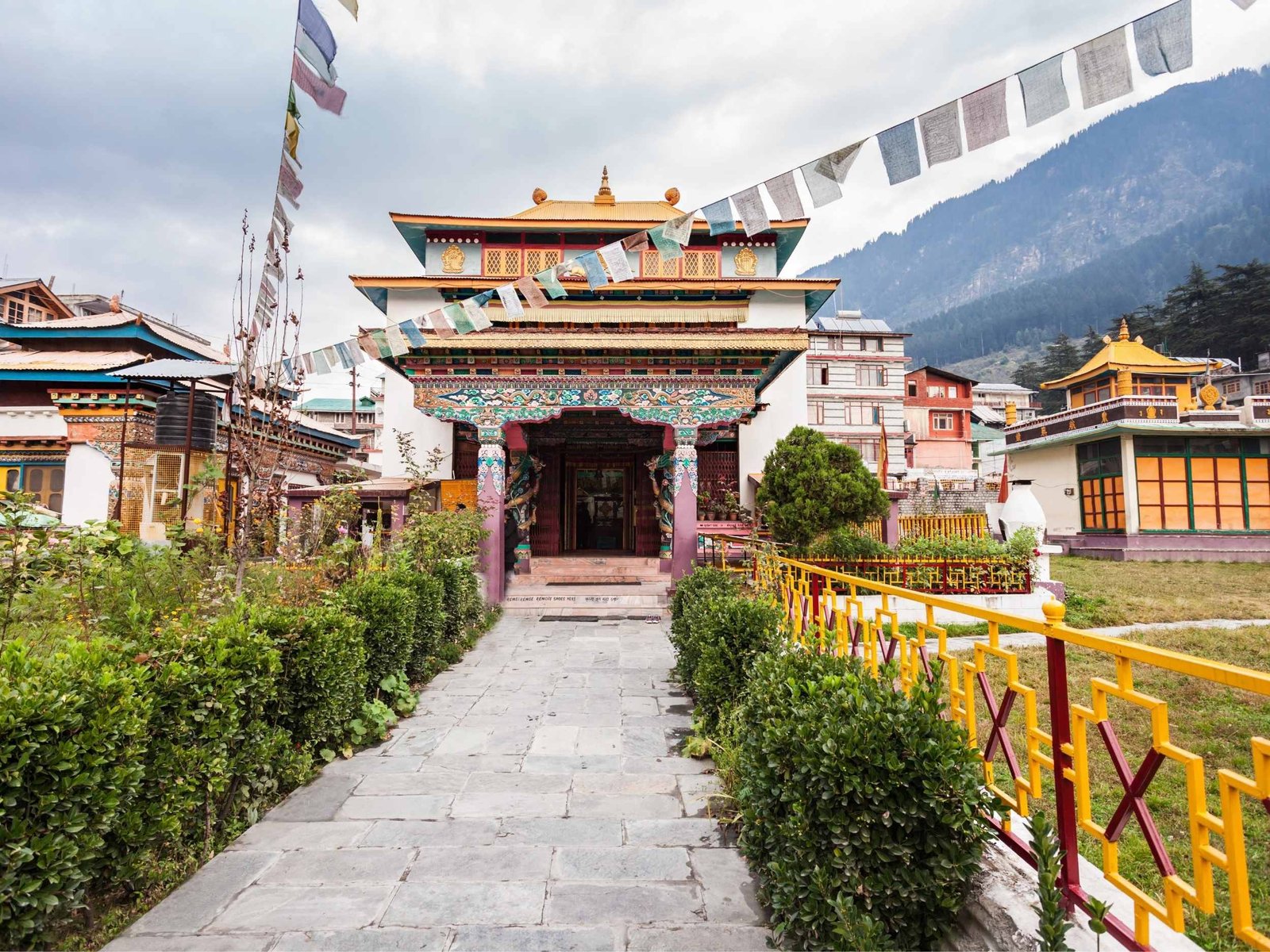
The Himalayan Nyingamapa Gompa in Manali is situated near Mall road itself. This monastery is built in a more modern style of architecture as compared to the usual Tibetan monasteries. The entire look of this monastery is a sight for sore eyes. It’s surrounded by sunflowers and has light bulbs that are lit up at night which make it look like a glowing star. The statue of Lord Buddha in this monastery is a bronze statue with a golden face. The Tibetan Monasteries of Manali also run the Thanks School of Arts and a Carpet-weaving Center in order to preserve ancient Tibetan art.

The Naggar Castle is a medieval structure built by Raja Sidh Singh of Kullu in around 1460 A.D. This grand mansion overlooking the Kullu Valley is a great example of western Himalayan architecture. The castle is made with a mix of medieval stones as well as wood. This castle was the official residence of Kullu kings for centuries. During the earthquake of 1905, most houses in the valley and the nearby city of Jawa were completely ruined. Yet, the castle survived this calamity due to its use of earthquake-proof techniques. Back in 1978, the Naggar Castle was converted into a rest house and handed over to the Himachal Pradesh Tourism Development Corporation (HPTDC). Today, it is run as a beautiful Heritage Hotel.
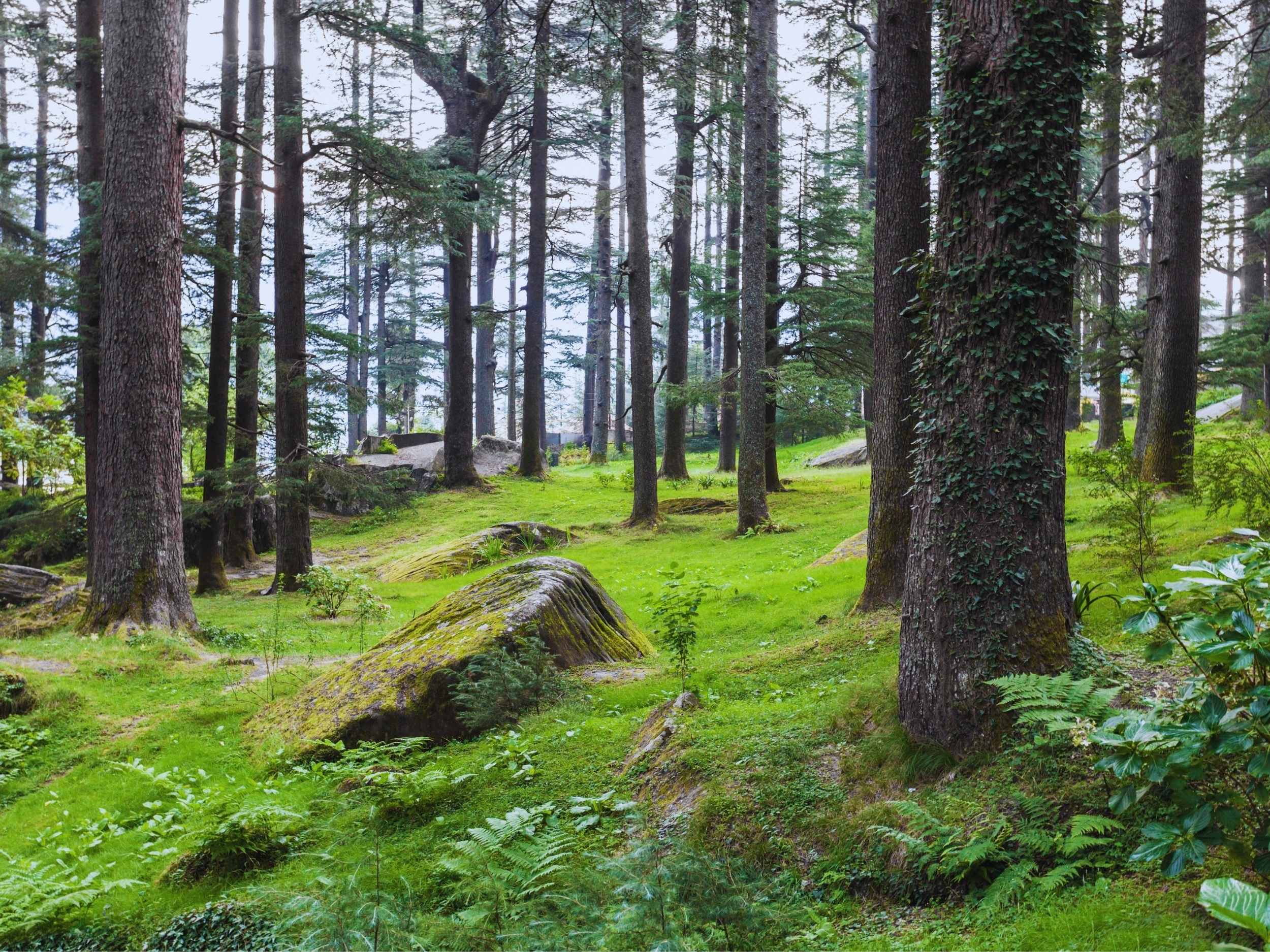
Tall Deodar, Birch, and Pine trees cover the expanse of this picture-perfect park located on Mall Road. Van Vihar Park is a popular nature spot to visit when in Manali. Taking refreshing strolls among the trees, listening to the sounds of birds, or simply sitting on one of the wooden or concrete benches is a great way to relax. You will find a man-made lake within the park premise, which probably is the most popular attraction here. Both adults and children can enjoy a boat ride around this lake. The highlight of a visit to this park is watching the sunset. Watching the light trickling down the gaps in the trees with the snow-capped Himalayan ranges in the background, is a visual treat.
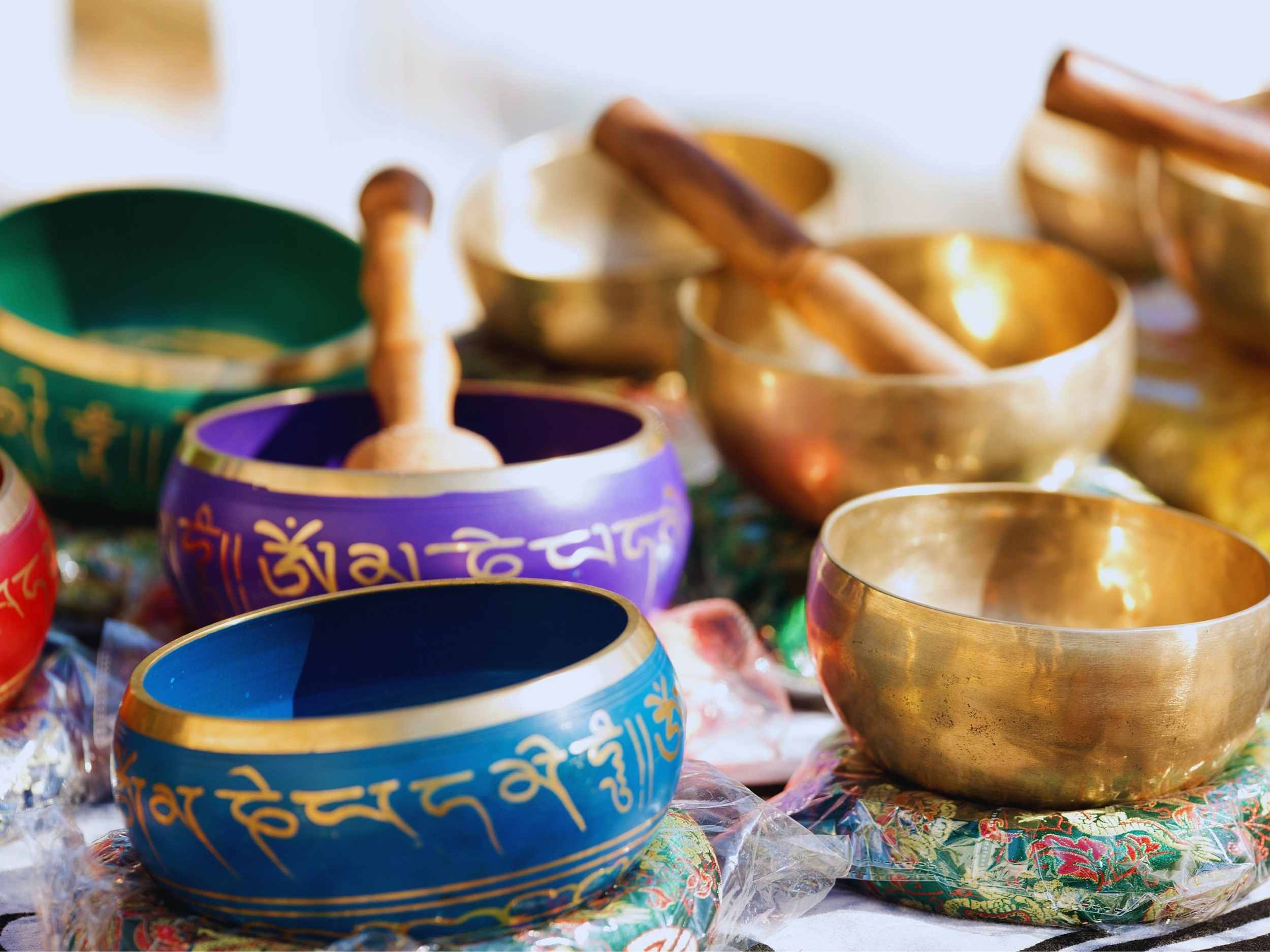
In a sense, Mall Road is the urban heart of Manali. A premium shopping destination, Mall Road is always bustling with life. Shops line up on both sides of the road, with their products displayed neatly in rows of myriad colors. You will find a huge range of products starting from popular Kashmiri products like shawls and sarees to trinkets, house decor, books, antique items, and more. Apart from individual shops, there are several shopping complexes offering extremely fashionable clothes and shoes. You will find cafes and restaurants offering delectable dishes that’ll make your mouth water like momos, thukpas, and all sorts of foods.
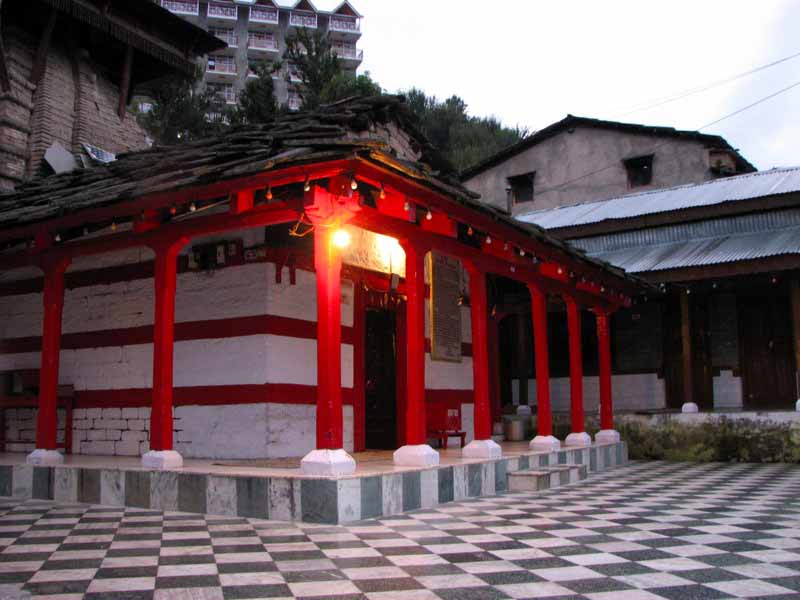
A temple dedicated to Sage Vaishist with a 4000-year old history sits in the scenic village about 3 km from Manali. Situated across the River Beas, this village is a historically significant spot for Hindus because one of the Saptarishis Rishi Vaishisht resided here for some time. Legends suggest that Rishi Vaishisht tried to end his life after learning that his children had been killed by Sage Vishwamitra. Yet, the river (Beas) refused to allow him to die. This caused Rishi to reconsider his decision. He then vowed to start his life anew and then proceeded to meditate for centuries to come. Right next to the Vashisht Temple is a natural hot spring called Vashisht Kund.
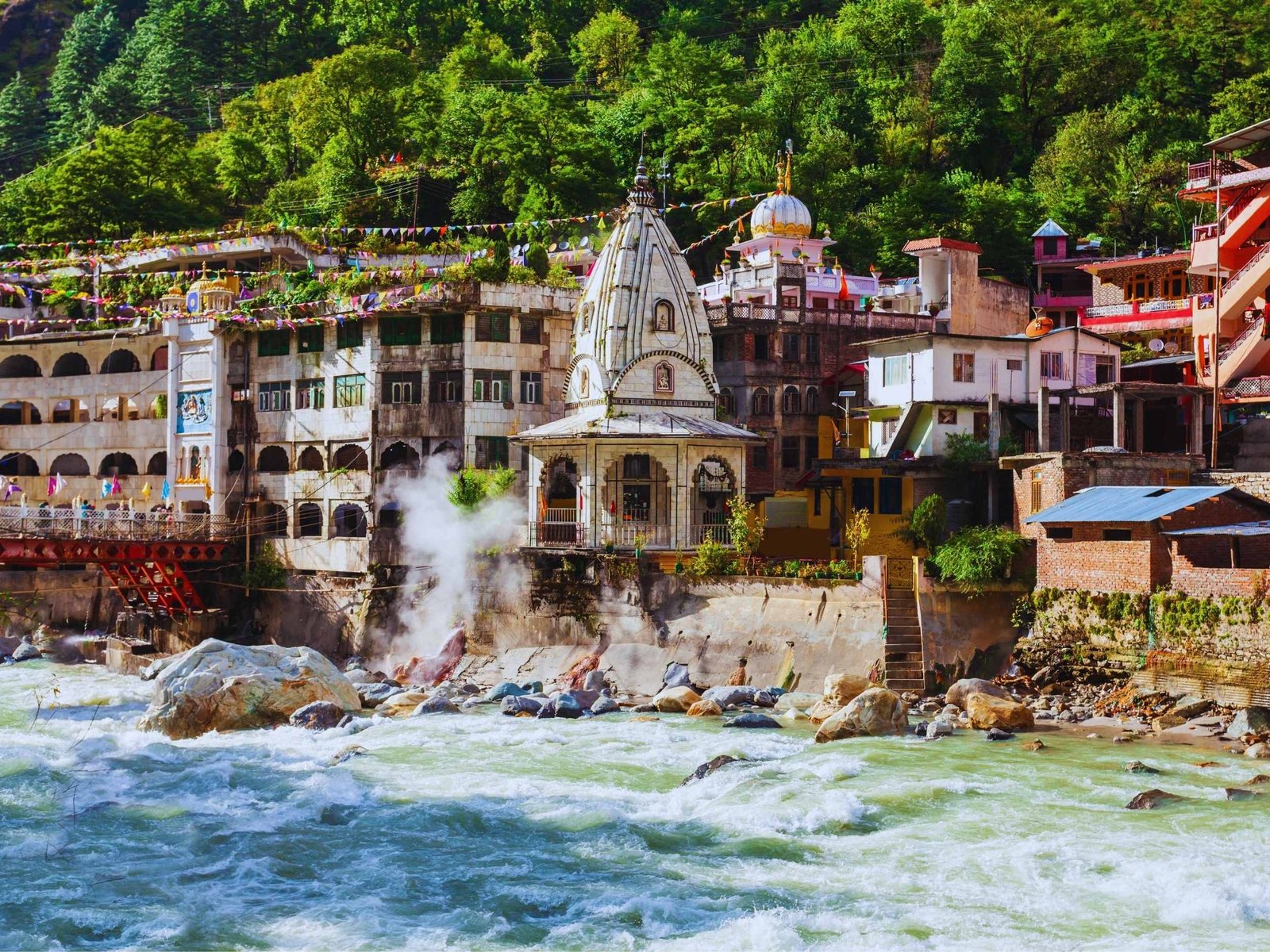
Colorful flags trail from the domed top. A screen of mist rising from the hot water well, and the sound of the Parvati river gushing by. This is the scene surrounding the Gurudwara Sahib in Manikaran. Situated deep within the Parvati Valley, the Manikaran Sahib is one of the most prominent holy spots in India. Located at an impressive altitude of 1760 m, this place is in close proximity to the Manali valley. It is a vital pilgrimage for both Hindus and Sikhs. According to Hindu mythology, this was the place where Manu created life after the great flood ended. Sikhs believe that Guru Nanak came to this place in 1574 with his disciple Bhai Mardana during the third Udasi.
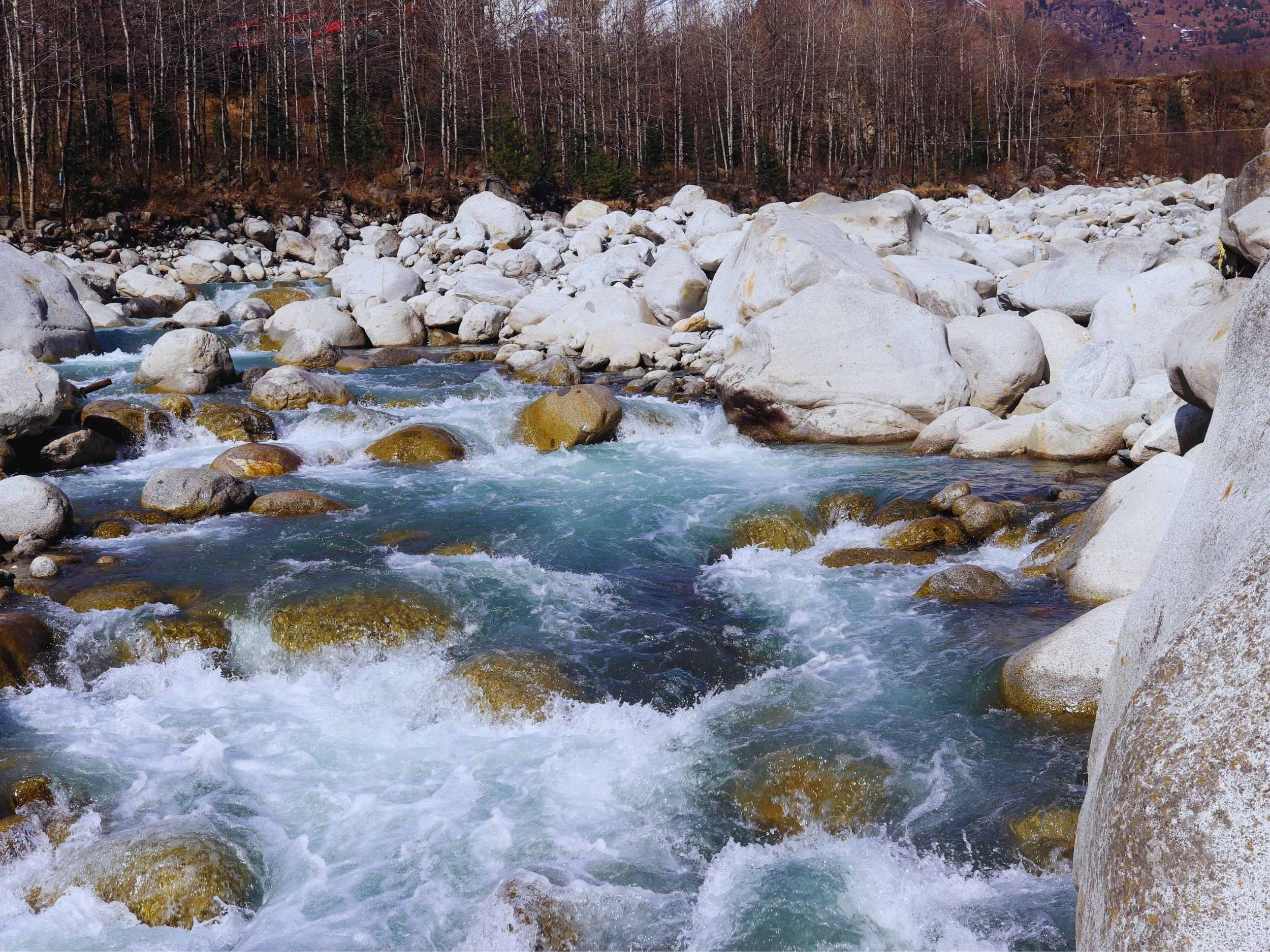
A beautiful river with pristine waters, the Beas originates in the Himalayan range in central Himachal Pradesh. It flows for 470 kilometers and then joins the mighty Sutlej River in Punjab. The river is the main source of drinking water in the Kullu, Mandi, and Kangra regions. River Beas flows very elegantly through Manali. One can sit by the river for a few hours and get lost in their own thoughts while gazing at its transparently green water. For people who prefer a more quiet pace, you can click pictures of this beautiful river, take a stroll in the nearby foliage or dip your feet in the cool water.

A Russian artist who came to the Himalayas after the revolution of 1917, Nicholas Roerich gained immense fame. He passed away in 1947 and 15 years later in 1962, his home was converted into an art gallery. The ground floor of the gallery houses paintings of Kullu, Spiti, and Lahaul made by Nicholas. While the upper floor of the museum has been preserved as the artist’s private rooms. The displays in these rooms include framed photos of Nicholas, a notable one being the one taken on his front lawn with Pandit Jawaharlal Nehru. Most of Roerich’s paintings depict the beauty of snow-capped valleys and mountain peaks during the early hours of the evening.

Our small group size ensure a personal touch, and our group leaders make sure to bond the entire group like long-lost friends. Hence, along with an amazing travel experience, you are in for a great of great social bonding.
To book this trip, please Call/ WhatsApp/ Email using the below-mentioned details.
If you have any questions or concerns, then please feel free to contact us using the below-mentioned details. Alternatively, fill this form and our team will get back to you at their earliest.

Chandratal Lake – the most awaited part
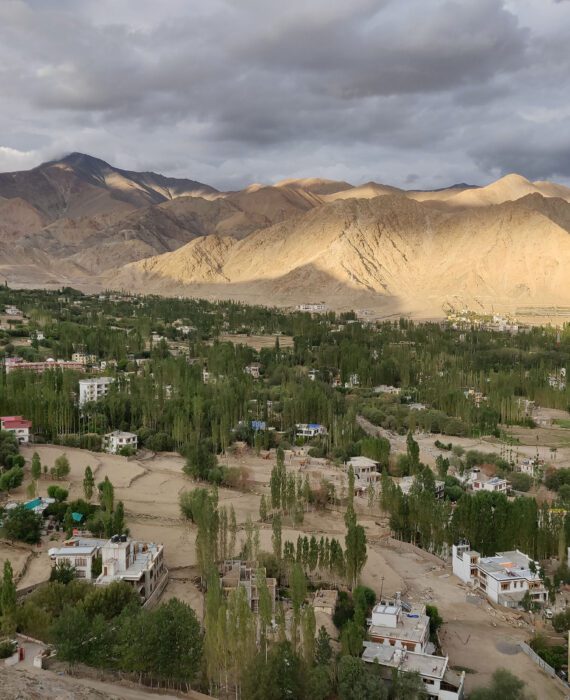
An old Tibetan saying translates to, “The